Update from December: We’ve added to this post to include more events through the rest of 2020.
While the freedom to protest is not mentioned specifically in the First Amendment, the right to voice dissent is a long-standing American tradition, and protest became an officially recognized form of assembly by the US Supreme Court in their 1969 ruling in Shuttlesworth v. Birmingham.
The state of the country in 2020 has underscored the importance of Americans living their First Amendment freedoms. From the beginning of the coronavirus pandemic, an unhindered free press has proved vital in publishing information on how Americans can stay safe and healthy. People have also exercised their right to peaceably assemble, with many “Reopen” protests spreading throughout the country in response to state-mandated shutdowns.
The five freedoms of the First Amendment work in concert to empower change. They protect our freedom to believe in new ideas, to vocalize those ideas, to explain or defend those ideas in the press, to assemble in support of those ideas, and to officially petition the government to legislate in favor of those ideas. When embraced simultaneously by enough people, they create a movement.
George Floyd’s death on May 25, 2020 has brought about a massive wave of protest against racial injustice, the likes of which were last witnessed half a century ago when cities around the nation erupted in response to the assassination of Dr. Martin Luther King, Jr.
In the following months, Black Lives Matter protests occurred in every state of the Union, ranging from hundreds of thousands of people in large cities to single individuals on rural street corners. In fact, this movement encouraged people around the world to stand in solidarity with Americans seeking to build a more just society, and thousands upon thousands of people have come together in peaceful gatherings, vigils, marches, and speeches to protest racism.
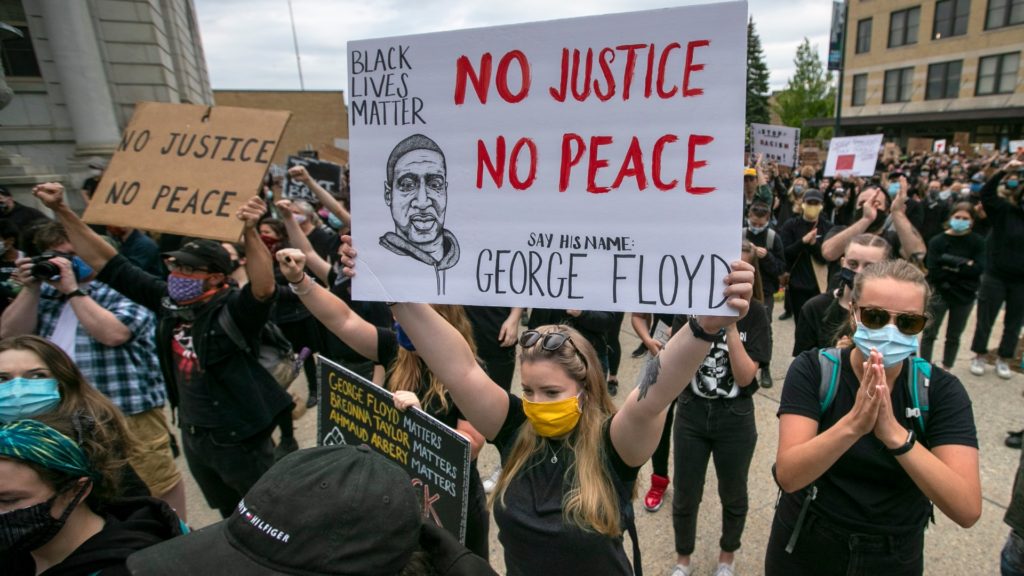
Demonstrators at a rally on June 3 in Portland, Maine. (Robert F. Bukaty/AP) 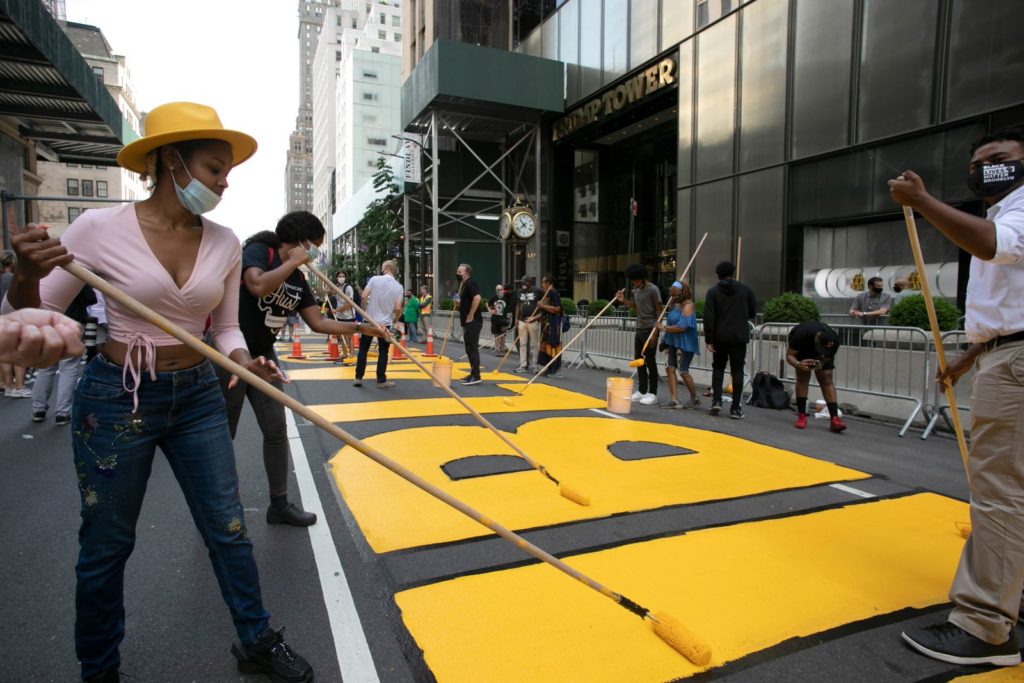
People in New York City paint a Black Lives Matter mural on the street on July 9. (Mark Lennihan/AP)
By utilizing internet and social media technologies, Black Lives Matter organizers reached more people, planned more assemblies, and gathered more signatures than ever before. For instance, in less than a month of its creation, more than 18 million people signed the “Justice for George Floyd” petition. Online petitions enabled calls for action to reach a wider audience at lightning speed, and, when combined with assembled multitudes demanding change, resulted in heightened levels of civic and social pressure.
We witnessed infringements on the First Amendment, too. According to the Press Freedom Tracker, in 2020, there were nearly 1,000 reported incidents of aggression against the press, including denial of access, equipment damage, physical attacks, and 120 arrests. There have also been clear violations of the freedom to peaceably assemble, with peaceful protesters across the nation having been attacked with tear gas and rubber bullets.
Any time an individual and/or a community is marginalized, silenced, alienated, or excluded, there is a First Amendment issue at stake, because we should all have equal access to our First Amendment rights. Those rights give us a voice to stand against injustice, and they give us the power to change it. They allow us to have dreams for the future of our country, and to turn those dreams into realities.
In 2020, we have witnessed how Americans create change by exercising their First Amendment freedoms. If you are planning on exercising your Constitutional right to peaceably assemble, below are some resources to help you to stay safe from a health perspective, and protected, from a legal perspective:
Resource for Protesting Safely during COVID-19 pandemic
Resource for Knowing Your Legal Rights During a Protest

Marchers pass the Blaine House in Augusta, Maine on July 12 (Andy Molloy/Kennebec Journal) 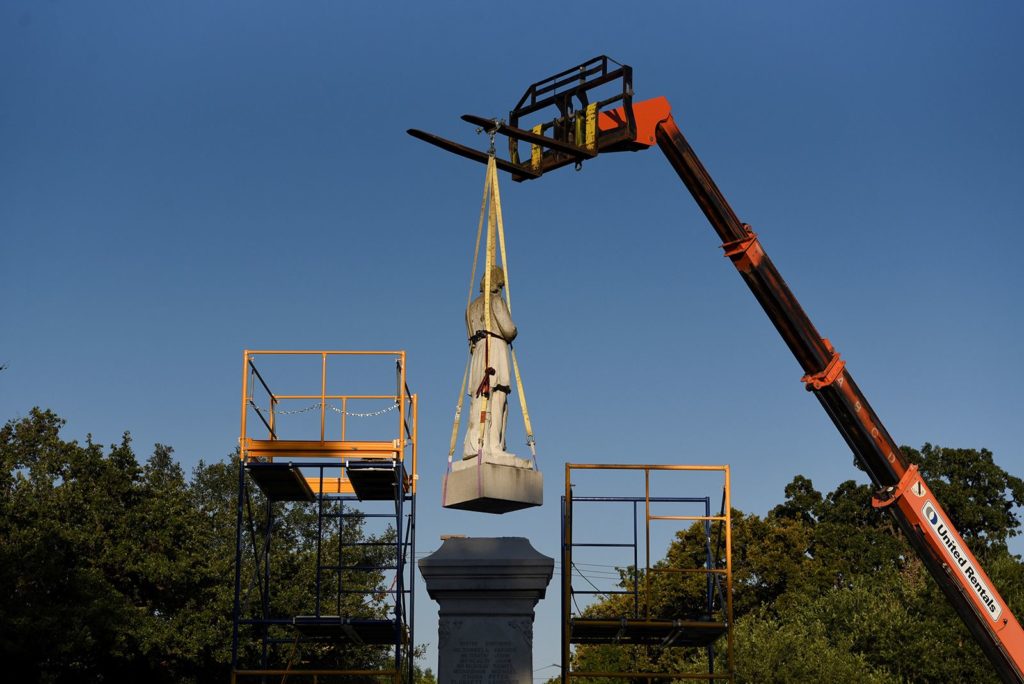
A statue of Confederate Maj. Richard W. Dowling is removed in Houston on June 17. (Callaghan O’Hare/Reuters
At the First Amendment Museum, where we inspire people to live their freedoms, we celebrate the fact that so many people have been exercising their rights!
The events since late May have showcased the power of protest; more specifically, how mass action by the people has brought pressure to bear on individuals, organizations, communities, and local governments to act on events they would have previously down-played or ignored, and to enact changes at a swifter pace than anticipated, both of which reflect a broader cultural shift that demands racial equality and justice.
May 26
After the video of George Floyd’s murder is widely circulated on social media, protests begin in Minneapolis, Minnesota, where George Floyd was murdered.
May 27
Protests spread to cities across the nation. In Louisville, protestors focus on the recent death of local Breonna Taylor who was shot in her bed by police on March 13.
June 2
June 3
June 4
June 5
June 6
Two Buffalo police officers are charged with second-degree assault after pushing a 75-year-old protestor to the ground and injuring him.
A number of elected officials in California and in New York are turning away campaign money donated from police unions.
June 7
June 8
June 9
June 10
June 11
June 13
June 15
June 16
June 18
June 19
June 23
June 24
June 28
July 27
July 28
July 29
August 27
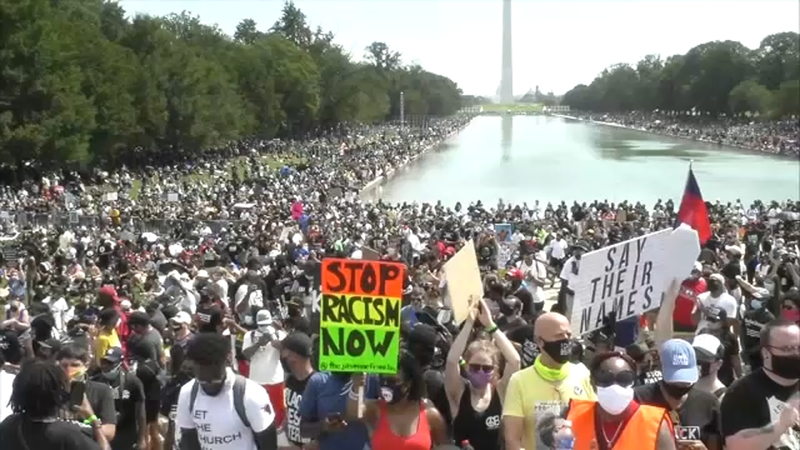
Protestors at the March on Washington 2020 (ABC) 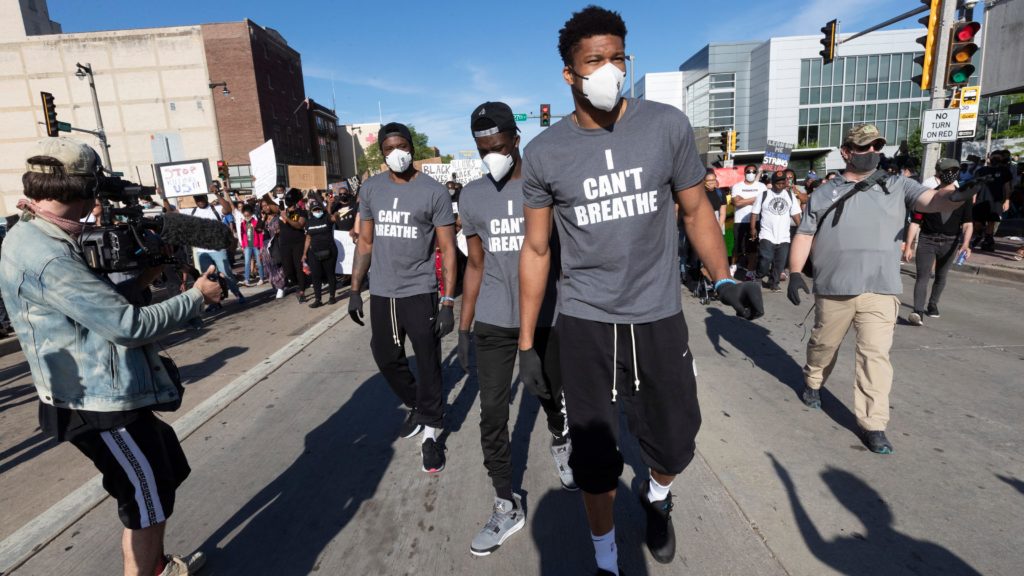
Milwaukee Bucks stage a walkout protest (Mark Hoffman, Milwaukee Journal Sentinel)
September 8
September 19
October 27
November 5
November 9
November 21
December 10
December 24
Protests are held in Columbus, OH in response to the police killing of 47-year old Andre Hill.

